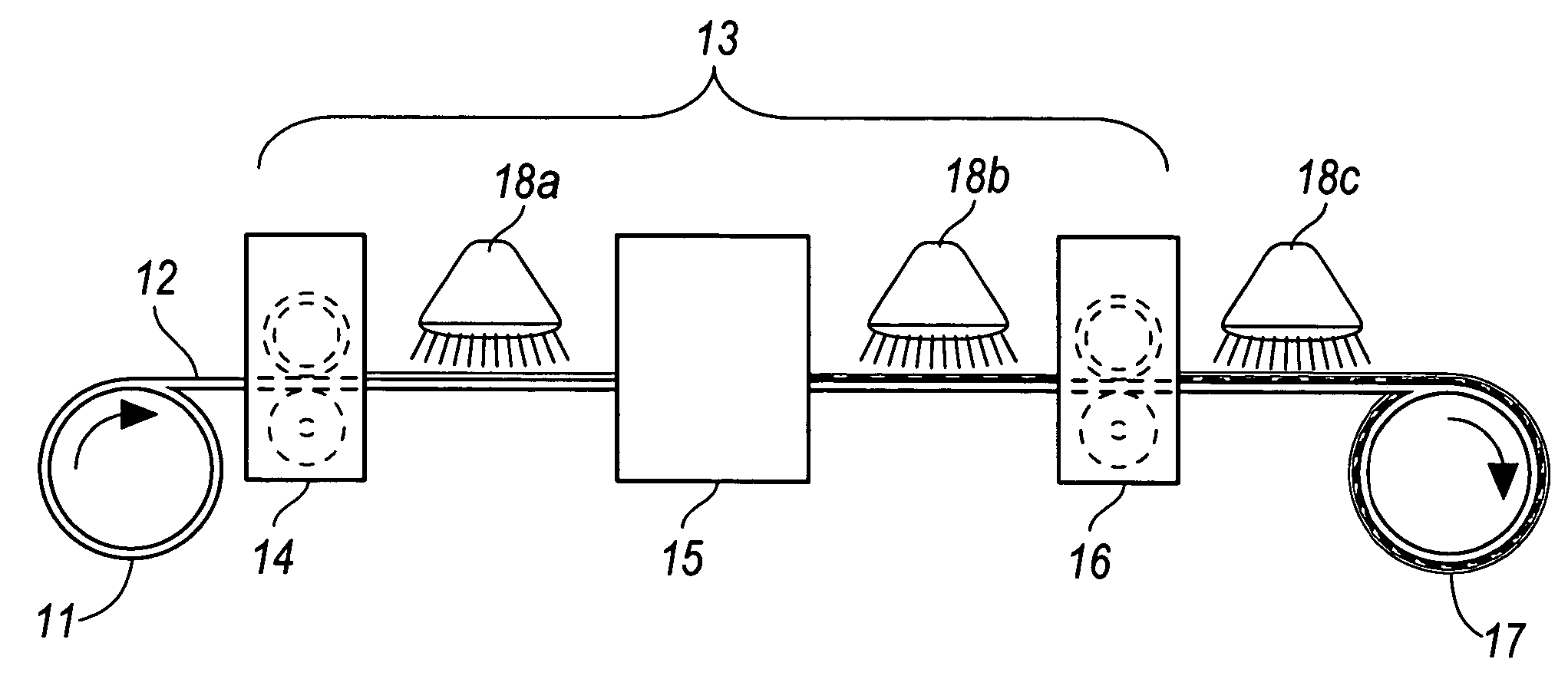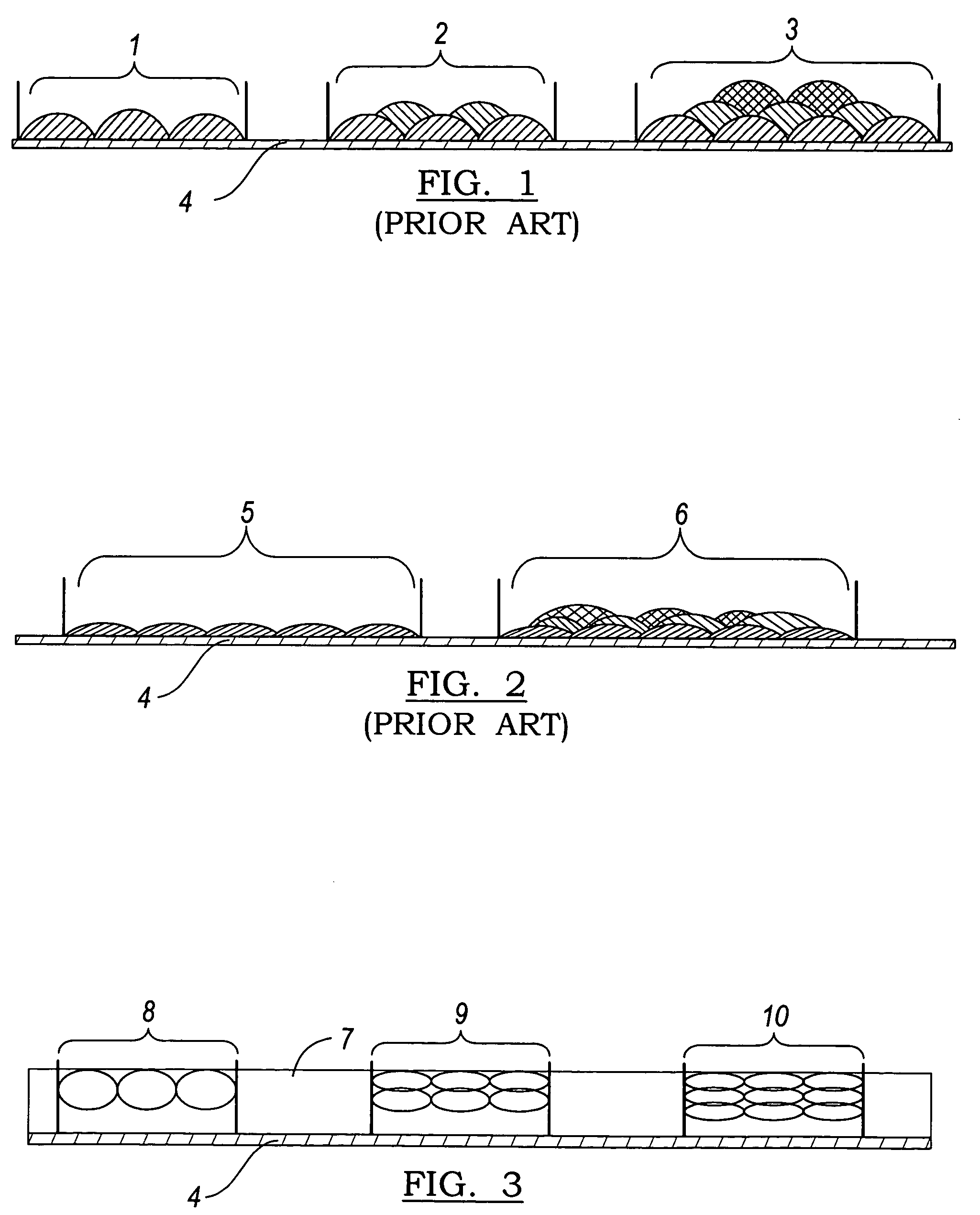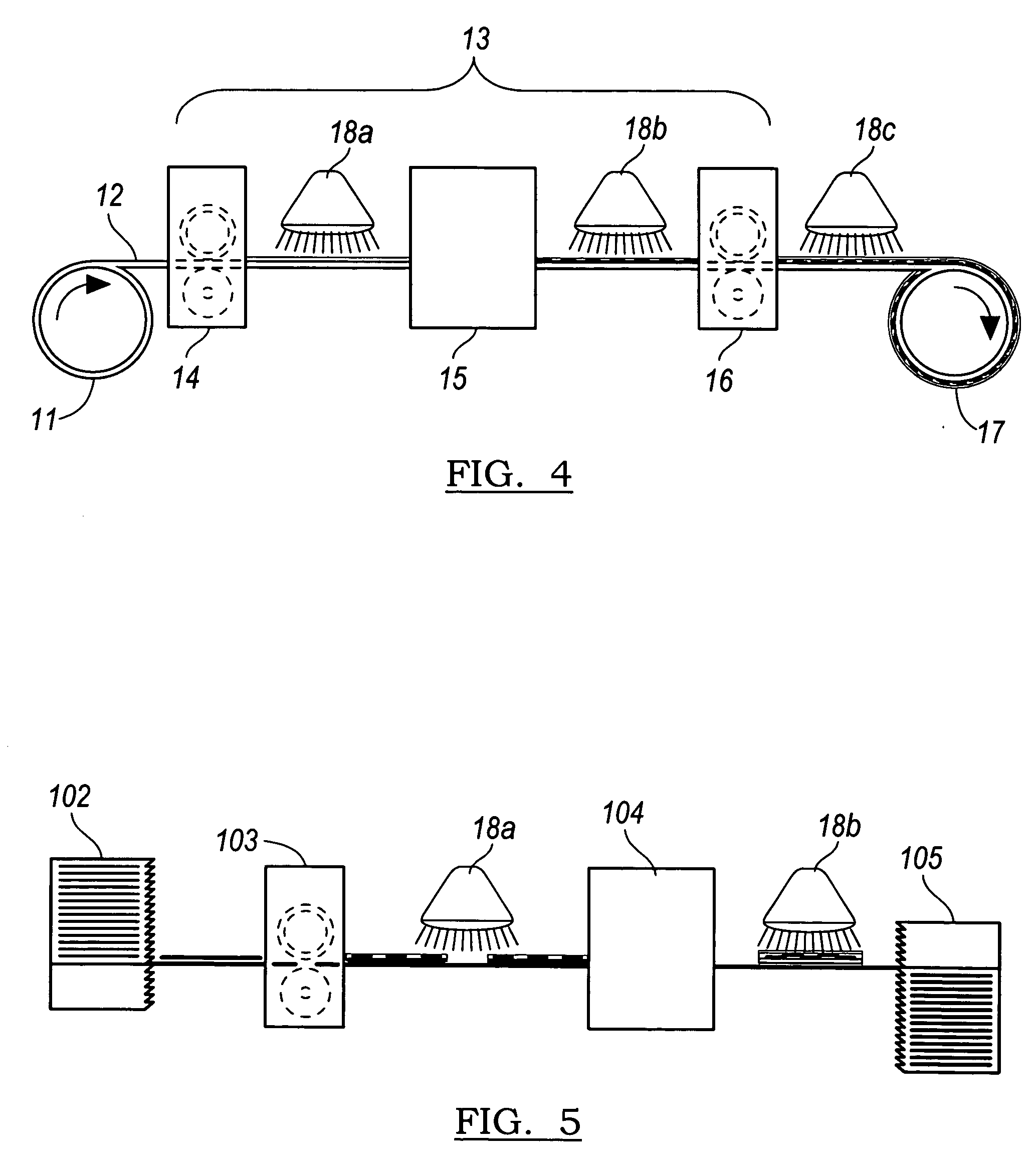Smooth finish UV ink system and method
a technology of uv ink and printing system, which is applied in the direction of printing press, printing, duplicate/marking method, etc., can solve the problems of reducing print definition, reducing print definition, and reducing the definition of print, so as to improve surface smoothness and reduce drop spread
- Summary
- Abstract
- Description
- Claims
- Application Information
AI Technical Summary
Benefits of technology
Problems solved by technology
Method used
Image
Examples
Embodiment Construction
[0015] The following description of the preferred embodiment(s) is merely exemplary in nature and is in no way intended to limit the invention, its application, or uses.
[0016] The inventive system and method provide a means of printing an energy-curable ink with a desirable color density onto nonabsorbent and semi-nonabsorbent substrates. In a first step, a coating receptive to the energy-curable ink is applied to a substrate. The coating may be applied, for example, using flexography gravure coating, bead coating, sloth coating, reverse gravure coating, spray coating, or other known coating methods.
[0017] The ink-receptive coating can be applied over nonporous substrates like metal sheets that may then be formed into cans, plastic, glossy-finished paper or paperboard. Examples of nonabsorbent or semi-nonabsorbent substrates include, without limitation, high gloss paper, satin paper, coated papers, or paperboard; plastic (e.g., polyethylene, polypropylene, or polyester), which may...
PUM
| Property | Measurement | Unit |
|---|---|---|
| particle size | aaaaa | aaaaa |
| viscosity | aaaaa | aaaaa |
| particle size | aaaaa | aaaaa |
Abstract
Description
Claims
Application Information
 Login to View More
Login to View More - R&D
- Intellectual Property
- Life Sciences
- Materials
- Tech Scout
- Unparalleled Data Quality
- Higher Quality Content
- 60% Fewer Hallucinations
Browse by: Latest US Patents, China's latest patents, Technical Efficacy Thesaurus, Application Domain, Technology Topic, Popular Technical Reports.
© 2025 PatSnap. All rights reserved.Legal|Privacy policy|Modern Slavery Act Transparency Statement|Sitemap|About US| Contact US: help@patsnap.com



